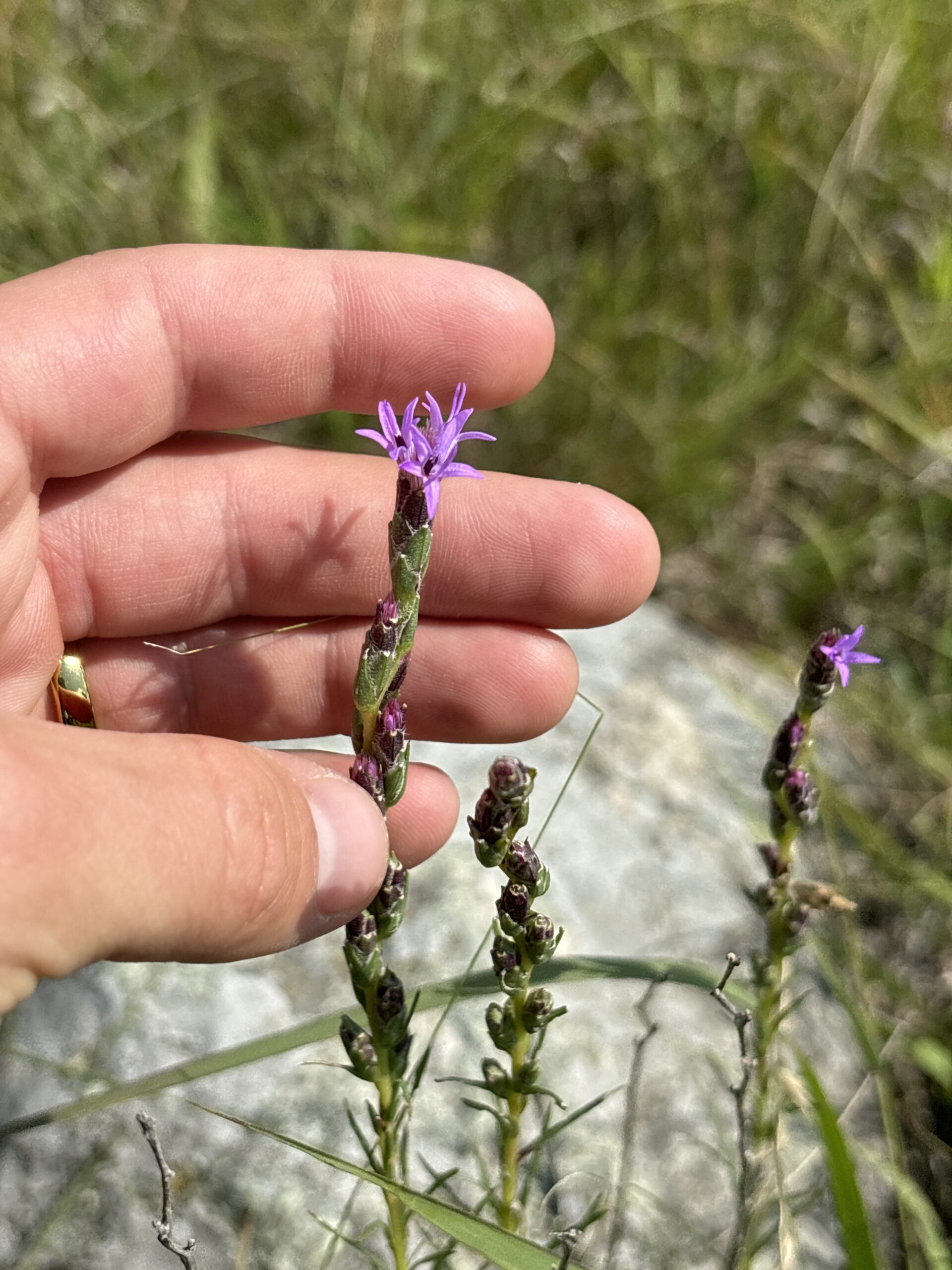This summer, I had the privilege of leading an exciting project investigating the effects of prescribed burns on plant communities in Minnesota’s prairies. Land managers commonly use prescribed burns to prevent the spread of woodlands and promote native prairie plants. While the positive effects on native plants have been shown, the impact on exotic flowering species remains unexplored. My research aims to fill this gap by comparing how prescribed burns affect the flowering of native and exotic species. Ultimately, I hope to provide land managers with insights on how to better use fire to protect and restore prairie ecosystems.
The data collection phase was a collaboration with the Echinacea Project’s floral assessment experiment, which seeks to quantifying the floral resources are available to pollinators at our sites. I was responsible for planning data collection routes and coordinating teams to survey across 42 sites. At each location, we identified and recorded the flowers present and estimated their abundance. This part of the project was the most rewarding aspect of my summer. Getting to know the individuals that make up the plant communities of Minnesota’s prairies gave me a deeper understanding of their unique ways of existing and how they come together to form larger prairie ecosystems.
Moving forward, I’ll be analyzing the data our field teams collected, comparing this year’s findings with last year’s to assess how plant communities change before and after burns. This comparison will allow us to track changes in species richness, diversity, and abundance before and after a burn event, providing a clearer picture of the role fire plays in shaping prairie ecosystems.
While there’s still plenty of analysis ahead, I’m excited to see where this research leads! A big thank you to the 2024 Echinacea team for an amazing summer—I learned so much and enjoyed many giggles, hijinx and things to make you think! Rah!

